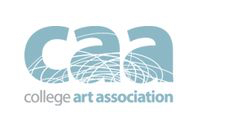 The visual arts communities of practice—artists, scholars, teachers, museum professionals, and more—share a common problem: confusion and misunderstanding of the nature of copyright law and the availability of fair use, according to a report by American University and issued by the College Art Association.
The visual arts communities of practice—artists, scholars, teachers, museum professionals, and more—share a common problem: confusion and misunderstanding of the nature of copyright law and the availability of fair use, according to a report by American University and issued by the College Art Association.
Their work is constrained and censored, most powerfully by themselves, because of that confusion and the resulting fear and anxiety. Better and more work can be done with better copyright understanding, without impairing the ability of artists and scholars to get credit for their work, maintain appropriate control over their work, and monetize their work.
Some key takeaways of the report:
• Members of the visual arts community typically overestimate risk of employing fair use, which leads them to avoid it, even in circumstances where the law permits and so doing would not harm personal relationships needed for their work.
• They pay a high price for copyright confusion and misunderstanding. Scholars avoid both certain artists and topics, and grad students are steered away from modern work. Museum exhibitions are changed, and catalog publication cancelled. Journals are issued without critically important illustrations. Digital innovation is delayed or even avoided.
• A third of visual arts professionals overall have avoided or abandoned work in their field, because of insecurity about fair use.
• The highest cost is the “missing future,” the scholarship undone, the knowledge not preserved for the next generation, the creative use of digital opportunities truncated.
• Although both artists and others in the visual arts community share these problems, artists are more likely to use copyrighted material without licensing it, and less likely to abandon or avoid projects because of copyright frustrations.
Profs. Patricia Aufderheide and Peter Jaszi were co-principal investigators on the research report, and graduate fellows at the Center for Media and Social Impact, Tijana Milosevic and Bryan Bello, contributed. The report, commissioned by the College Art Association, was funded by the Andrew W. Mellon Foundation.
Read the full report here.
